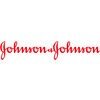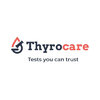Filter interviews by
HLL Lifecare Interview Questions and Answers
8 Interview questions
SQL in MYSQL is a query language used to interact with databases to retrieve, insert, update, and delete data.
SQL stands for Structured Query Language
It is used to communicate with databases like MYSQL to perform various operations
Common SQL commands include SELECT, INSERT, UPDATE, DELETE
Example: SELECT * FROM table_name WHERE condition;
Motor works on the principle of electromagnetic induction to convert electrical energy into mechanical energy.
Motor consists of a coil of wire (armature) that carries an electric current.
When current flows through the coil, it creates a magnetic field around it.
This magnetic field interacts with the magnetic field of the permanent magnets in the motor, causing the armature to rotate.
The rotating armature then driv...
Calibration of pipette is the process of adjusting the pipette to ensure accurate and precise volume measurements.
Calibration involves checking the accuracy of the pipette by comparing the volume it delivers to a known standard.
Adjustments are made to the pipette if necessary to ensure accurate and precise measurements.
Calibration should be done regularly to maintain the accuracy of the pipette.
Examples of calibra...
The temperature of a BRT machine in normal work condition varies depending on the type of machine and the material being processed.
The temperature can range from 100°C to 400°C depending on the machine and material.
The temperature is usually controlled by the operator or a computerized system.
The temperature may need to be adjusted based on the desired outcome of the process.
The temperature can affect the quality ...
Data Integrity refers to the accuracy and consistency of data throughout its lifecycle. ALCOA is a set of principles for ensuring data integrity.
Data Integrity ensures that data is accurate, complete, and reliable.
ALCOA stands for Attributable, Legible, Contemporaneous, Original, and Accurate.
Attributable - All data should be attributable to the person who created or modified it.
Legible - Data should be clear and ...
Software testing is the process of evaluating a software application or system to find defects or bugs.
Software testing ensures that the software meets the requirements and works as expected
It involves various types of testing such as functional, performance, security, and usability testing
Testing can be done manually or using automated tools
SQL architecture refers to the design and structure of a database managem...
Laboratory test techniques involve various methods used to analyze samples in a laboratory setting.
Common laboratory test techniques include microscopy, chromatography, spectrophotometry, and immunoassays.
Microscopy involves using microscopes to examine samples at a microscopic level.
Chromatography separates components of a mixture based on their different interactions with a stationary phase and a mobile phase.
Sp...
Internal billing reporting refers to the process of tracking and analyzing financial transactions within a company.
Internal billing reports help companies identify areas of financial inefficiency and make informed decisions about budgeting and spending.
These reports may include information on revenue, expenses, and profit margins for different departments or projects.
Examples of internal billing reports include ba...
HLL Lifecare Interview Experiences
40 interviews found
I applied via Walk-in and was interviewed in Jul 2024. There were 2 interview rounds.
Diagnostic tests . Imagine study
(3 Questions)
- Q1. Test all scan imagine
- Q2. Ct scan tech radiographer
- Q3. Working test scan
Interview Preparation Tips
I applied via Newspaper Ad and was interviewed in Nov 2024. There were 2 interview rounds.
Multiple Questions followed by interview
(1 Question)
- Q1. Experience followed by Document verification
I applied via Approached by Company and was interviewed in Mar 2024. There were 4 interview rounds.
(1 Question)
- Q1. Pharmacology and clinical pharmacy
(1 Question)
- Q1. Pharmacovignace
(1 Question)
- Q1. Related to the hospital pharmacy
(1 Question)
- Q1. Pharmaceutical chemistry
(1 Question)
- Q1. WHY DO U WANT TO JOIN HLL?
I applied via Newspaper Ad and was interviewed in Nov 2023. There were 2 interview rounds.

(5 Questions)
- Q1. 1) What is lipid profile
- Ans. Ans - Triglycerides Total cholesterol HDL LDL
- Q2. 2) What is LFT profile
- Ans. Ans- SGOT SGPT Alkaline Phosphate Total protein Albumin Total billirubin Direct billirubin
- Q3. What is normal range of random blood sugar...??? Ans - 70 to 110 mg/dl
- Q4. 4) What is pregnancy blood test Ans - B-HCG
- Q5. 5) what is CBC profile Ans - Heamoglobin RBC wBC PCV MCV MCHC MCH
Interview Preparation Tips
I appeared for an interview in Oct 2024, where I was asked the following questions.
- Q1. Plz tell me ten branded medcine name
- Q2. Plz tell me different to branded and monopolic
I appeared for an interview in Nov 2023.

(1 Question)
- Q1. 1) what is a lipid profile...? Ans - 1)Total cholesterol 2) Triglycerides 3) LDL 4) HDL 2) What are a CBC ...? Ans- 1) Hemoglobin 2) RBC 3)WBC ...
(1 Question)
- Q1. 1)Which study of blood..?? Ans - study of heamatology
I applied via Recruitment Consulltant and was interviewed in Sep 2023. There were 2 interview rounds.

(3 Questions)
- Q1. Why are you left last working company?
- Ans. Because I am not in company parole, I am in third party...
- Q2. Which areas you are seeing at in the company?
- Q3. I am seeing East, north and central delhi area ..
Interview Preparation Tips
I applied via Indeed and was interviewed in Jun 2024. There was 1 interview round.
Anything about medicine
Interview Preparation Tips
Population, cricket, own topicsssss
(1 Question)
- Q1. What is sql in MYSQL?
- Ans.
SQL in MYSQL is a query language used to interact with databases to retrieve, insert, update, and delete data.
SQL stands for Structured Query Language
It is used to communicate with databases like MYSQL to perform various operations
Common SQL commands include SELECT, INSERT, UPDATE, DELETE
Example: SELECT * FROM table_name WHERE condition;
Skills evaluated in this interview
Top trending discussions






HLL Lifecare Interview FAQs
The duration of HLL Lifecare interview process can vary, but typically it takes about less than 2 weeks to complete.
Tell us how to improve this page.
HLL Lifecare Interviews By Designations
- HLL Lifecare Lab Technician Interview Questions
- HLL Lifecare Assistant Pharmacist Interview Questions
- HLL Lifecare District Project Coordinator Interview Questions
- HLL Lifecare Machine Operator Interview Questions
- HLL Lifecare Project Trainee Interview Questions
- HLL Lifecare Graduate Engineer Interview Questions
- HLL Lifecare Software Developer Interview Questions
- HLL Lifecare Area Sales Manager Interview Questions
- Show more
Interview Questions for Popular Designations
Overall Interview Experience Rating
based on 42 interview experiences
Difficulty level
Duration
Interview Questions from Similar Companies
HLL Lifecare Reviews and Ratings
based on 508 reviews
Rating in categories
|
Pharmacist
116
salaries
| ₹1.4 L/yr - ₹3.6 L/yr |
|
Lab Technician
84
salaries
| ₹1 L/yr - ₹5 L/yr |
|
Deputy Manager
46
salaries
| ₹3.8 L/yr - ₹15 L/yr |
|
Accounts Officer
41
salaries
| ₹2 L/yr - ₹5.6 L/yr |
|
Phlebotomist
26
salaries
| ₹0.8 L/yr - ₹3 L/yr |

Paras Hospital

Dr Lal PathLabs

Johnson & Johnson

Pacific BPO
- Home >
- Interviews >
- HLL Lifecare Interview Questions













